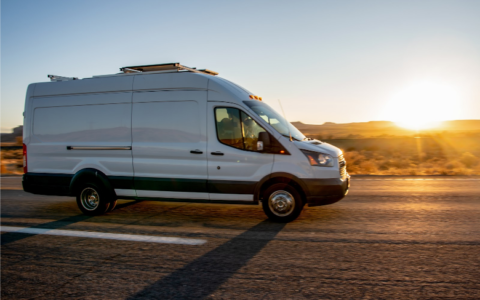P&D or Linehaul: What’s the Difference?
With online shopping on the rise, owning a FedEx route will always be a sustainable business investment.
But if you’re new to buying FedEx routes, it’s wise to determine what type of route you’d like to own before moving forward. This will narrow down your search, and ultimately, ensure you purchase a business that’s right for you.
Specifically, you can run a pick-up and delivery (P&D) route or linehaul route. Let’s look at the difference between your options:
What are P&D routes?
A P&D route covers residential and commercial locations in a specific region. FedEx contractors use small box trucks or vans to pick up packages and deliver them—thus, “pick-up and delivery”—to local homes and businesses.
In the past, P&D routes were either “Home Delivery” routes (to residential locations) or “Ground” routes (to commercial locations). But since May 2020, operators have been required to deliver to both residential and commercial locations within their territory.
P&D routes are usually recommended for first-time FedEx owners. Compared to linehaul routes, they cover fewer miles, which mainly involve local roads. In turn, these routes are smaller and less expensive to buy. P&D route drivers also require less qualifications than linehaul drivers.
What are Linehaul Routes?
Whereas P&D routes cover local deliveries, linehaul routes cover long-distance runs. Contractors use semi-trucks to deliver packages intra-state (within a state) or inter-state (across two or more states), which may span hundreds or thousands of miles on major highways.
Linehaul routes are more expensive than P&D routes. The 18-wheeler trucks are costly to maintain and repair, and the high-mile coverage requires significantly more gas. Drivers also need a commercial driver’s license (CDL) to operate a linehaul route, unlike P&D drivers.
However, the revenue is much higher. Compared to a P&D route, a single linehaul run may bring in five times more in profits.
There are three types of linehaul runs:
- Dedicated runs consistently service the same route and destination.
- Unassigned runs start in the same location and end in different destinations, depending on the delivery and FedEx needs.
- Spot runs are a combination of linehaul and P&D. Contractors use large semi-trucks to deliver freight to local customers, like Wal-Mart and other large retailers.
Buy a FedEx Route with KR Capital
If you’re still unsure what type of FedEx route is right for you, contact KR Capital. We can further explain the difference between P&D and linehaul routes, along with the pros and cons of each. Our team is happy to recommend a route based on your experience, desired location and more.
You can also view our available FedEx routes. For more information, submit our online buyer request form or call KR Capital at (503) 664-0753.




